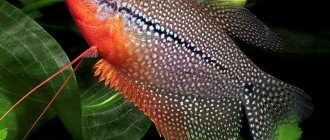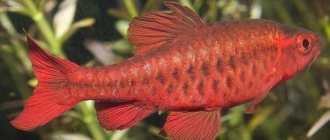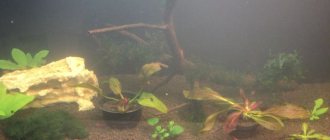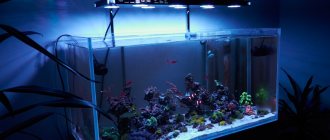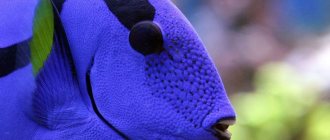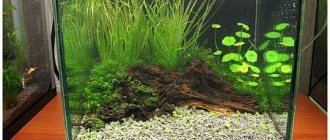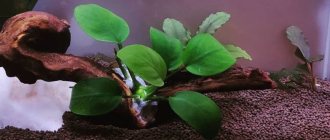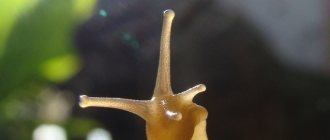Corals are amazing in their appearance and structure. These inhabitants of the seas and oceans outwardly resemble frozen lava, but in fact, they are full-fledged animals, polyps. It’s good that you can place this beauty in your own home aquarium and admire the bizarre forms and amazing life of these coelenterate inhabitants of the depths every day. We will consider further what corals to choose for the aquarium, which species is better to take a closer look at and how compatible they are with other inhabitants.
What are the different shapes of corals?
Corals differ from each other, first of all, in their bizarre shape. There are several common classes, one of which has already become extinct.
Eight-beam
Eight-rayed are common polyps that look like small, voluminous bushes right on the rocks or on the seabed. They are small in height, rarely exceeding 1 cm. They received the name “eight-rayed” due to the fact that they have eight tentacles and partitions located on the cap.
Eight-rayed - common polyps, similar to voluminous bushes
Six-beam
Another common type of polyp. Their peculiarity is that they can grow singly, and sometimes they are found in clusters and colonies. They are characterized by not eight, but six rays in the form of tentacles.
It is less common to find five or even ten tentacles. But this is rather an exception
Common species, can grow singly
Quadruple
This type of polyp has been lost and is considered extinct. They were widespread during the period BC and Paleozoic times.
Pearl bubble coral
Another coral that will decorate a home reef tank with a volume of at least 200 liters. These invertebrates look like caps made of bubbles with a diameter of about 30 cm.
Pearl coral prefers dim light and weak currents. They do not get along with hermit crabs. The blisters are very fragile and susceptible to disease. It has long, waving tentacles and exhibits quite aggressive behavior.
The “head” of the coral consists of small, 3-5 mm in diameter vesicles (vesicles), which are receptacles for zooxanthellae. By swelling, they provide the symbiotic algae living inside with more light. At night, the bubbles deflate, and the tentacles, on the contrary, extend.
Despite their mutually beneficial coexistence with zooxanthellae, bubble corals require additional feeding.
Types of corals by color
Nature has done its best, and on the ocean floor you can find polyps of various colors and shades. The following colors are considered the most common:
- brown;
- red;
- beige;
- white;
- dairy;
- pink;
- blue;
- green;
- peach;
- black.
On the ocean floor you can find polyps of various colors
Yellow and pearlescent corals are less common. Violet shades are very rare.
Some have heterogeneous colors, and their bodies are painted in two or three contrasting shades. Other species change color depending on the time of day, water temperature and other conditions.
Live varieties
If we are talking about aquarium-compatible living corals, they can be divided into two types: hard and soft polyps.
Both live on the seabed, form reefs and are not too demanding to care for. This means it will be easy to place them in the aquarium. Let's look at the names of corals belonging to individual varieties.
Sea anemones
Seeing it, you can immediately understand that it is an anemone, because it differs from other fellows living on reefs in that it does not have a skeleton. The presence of special suction cups, which are located right at the base, helps them to stay firmly on the seabed. Scientists call these devices soles.
Sea anemones are predators and feed on shellfish and small fish.
Sea anemones are predators and feed on shellfish
The hunting process is as follows: the sea anemone releases poison when the victim is nearby, within reach, it instantly paralyzes the mollusk or small fish. The anemone remains with the help of its elastic tentacles to pull up the prey and absorb it.
Soft corals for marine aquariums
The dream of every collector who is interested in aquarium hobby is to arrange a reef system with exotic tropical inhabitants as colorfully as possible. Not only fish can please the eye, but also amazingly beautiful living corals, which you can buy on our online portal.
To maintain living polyps in artificial conditions, experience and specific knowledge are required. In the natural environment there are many different species of living creatures that cannot interact in the limited conditions of an aquarium.
Soft (leathery) polyps are the most interesting representatives of the deep sea, settling on the fragments of hard coral reefs. They do not have a calcium base and belong to the invertebrate family. Some species are not demanding in terms of maintenance and easily adapt to a closed tank. But there are also individuals whose life support requires special attention.
Top most unpretentious soft corals
Soft corals for a marine aquarium are the best solution, as they are unpretentious to the conditions and have a spectacular appearance. We will talk about the most common types.
Gorgonians
Resident of the Pacific depths. If you look closely, from a distance it resembles a branched tree of a bizarre shape. In height with active growth it can reach 50 cm.
An excellent decorative element for an aquarium. Not afraid of strong currents, temperature range from +22 to +27 degrees Celsius. Needs frequent feeding to grow and develop. Eats phytoplankton and debris from the bottom.
Because of its color it is called black coral. However, the true shade is brown, and the blackness appears due to lack of sunlight.
Gorgonians are an excellent decorative element for an aquarium.
Like other Red Sea corals, it prefers low levels of salinity and acidity.
Sarcophytons
One of the most common polyps in the Pacific region. Similar to sedum. It is large in size, and two-meter specimens can be found on the ocean floor. In an aquarium, the volumes are much more modest.
Prefers temperatures from +22 to +28 degrees Celsius. Acidity and hardness should be low.
Nutrition comes from algae; phytoplankton is also suitable.
Sarcophyton is the most popular species in the Pacific Ocean
Releases toxins that are harmful to stony corals and some types of algae.
Clavularia
A soft coral that looks spectacular on the seabed, especially when lying on rocks. This may explain its incredible popularity among aquarists. Most often found in the Pacific region. Clavularia looks like a small tree with a lush crown. It reaches 2-3 cm in height.
In an aquarium, it spreads on the stones like a rug and looks impressive.
It does not tolerate proximity to stony corals, as it very often suffers from the substances that they secrete.
If conditions are suitable for clavularia, it grows quickly.
Prefers water temperature from +22 to +27 degrees Celsius, hardness 1.023-1.025, acidity 8.1-8.5.
Clavularia in an aquarium looks very impressive
It feeds on symbiotic algae and plankton.
Cladiella
Another popular soft coral from the Pacific region. Does not grow singly, preferentially in colonies. It can reach a height of 1.5 m. However, in an aquarium its dimensions are less impressive, reaching up to 10 cm.
Feels good in an aquarium of 100 liters of water at a temperature of +21 to +26 degrees Celsius. Acceptable hardness is 1.023-1.025, acidity is 8.1-8.3.
They feed on symbiotic algae. Sensitive to damage.
Cladiella does well in large aquariums
Cornularia
Representative of the Indonesian region. It grows only in colonies, the height reaches 2 cm. If the conditions are suitable, then it grows, forming a kind of mat.
It is a decorative element of the aquarium and looks impressive on the bottom.
Feels good in an aquarium with a volume of 100 liters or more. It is important to ensure good water circulation and filtration.
The temperature should range from 22 to 27 degrees Celsius. Ideal acidity is from 8.1 to 8.3, hardness is from 1.023 to 1.025.
Nutrition is provided by the remains of algae or phytoplankton.
For cornularia it is important to ensure good water circulation
Corals or coral polyps are a class of marine invertebrates. They often live in colonies, but there are also solitary species. Some of them have a strong calcareous skeleton (hard corals), and their colonies form specific elements of the seabed relief in tropical seas - coral reefs. Others are soft-skeletal and live near reefs created by their hard-skeletal neighbors.
Sea anemones are a family of corals that lack a skeleton at all. The second name is anemones. As a rule, they lead a solitary lifestyle. They are attached to the ground using a suction disk called a “sole”. Sea anemones are carnivorous creatures; they paralyze their prey (small fish or shellfish) with a potent poison, which is injected through a stinging thread. The food is then pulled towards the mouth by tentacles.
Corals, like many primitive organisms, reproduce by budding, but sexual reproduction is also possible. In this case, the larva matures in the intestinal cavity of the female and, emerging into the water, after some time attaches to the soil nearby, where a new polyp develops.
Corals in an aquarium
Living corals are inhabitants of salty aquariums with strong currents and warm water. They get their nutrition directly from the water. This makes them very demanding in terms of housing and feeding conditions.
Not all corals that exist in nature are able to survive in the small volume of a decorative aquarium. And the point here is not even in the food or the composition of the water. Some animals are adapted to high pressure under water, and simply cannot live at a depth of 70 cm.
However, among the inhabitants of shallow waters you can find wonderfully beautiful specimens. To keep them, it is recommended to have a large aquarium: 200-500 liters. It must have powerful filtration and water flow.
Corals can eat small fish. On the other hand, they themselves can serve as food. Since the well-being of polyps is our priority, it is worth adding only herbivorous marine fish to their aquarium.
Unlike dead plants, dead corals do not need to be removed from the aquarium: their skeletons serve as a place of residence for new individuals. This is how reefs are formed in the sea - large colonies of living corals that settle on the skeletons of their ancestors for many years.
Keeping in an aquarium
The most interesting and difficult aspect of keeping corals in an aquarium is, perhaps, feeding. According to their feeding method, corals are divided into three types:
1. autotrophic: they live in symbiosis with algae and feed on the products of their photosynthesis;
2. heterotrophic: they feed on plankton, which is introduced into their intestinal cavity by the current;
3. predatory: they capture prey through stinging threads with poisonous capsules.
Herbivorous corals are the most convenient for an aquarium: they feed on sugar from their algae tenants, and therefore you need to take care of them according to the same principle as living plants. The only special requirement is the presence of calcium in the water, which they need to form a skeleton.
Heterotrophs have more trouble, since they need to purchase special food, and also take care of its availability for the coral. In addition, they feed exclusively according to their mood: their mouths open when the polyps feel good and are happy with everything. If they are cold, or stuffy, or something else is wrong, the corals refuse food and may even die. It will not be possible to persuade them to eat a spoon “for dad.” Therefore, when purchasing heterotrophic corals for your aquarium, you need to be prepared to please them the way they want.
Many species of corals have found their place in the aquarium thanks to their ability to feed in both ways. This significantly increases their vitality and makes care and breeding easier.
Predatory corals feed on small invertebrates and fish. As a rule, hunting provides them with a small portion of nutrients, and the main diet remains plankton and algae. That is why, in fact, their breeding is possible in an aquarium.
When working with corals, you should remember that many of them secrete poisonous mucus for self-defense or can attack the aquarist’s hands with a stinging thread. Moreover, in sensitive people prone to allergic reactions, coral poisons can cause a noticeable disturbance in their well-being. Among the sea flowers there are also truly dangerous ones, which need to be handled only with thick gloves. They are beautiful, and some hobbyists keep them for the same reasons that they keep vipers or cobras in a terrarium.
The most common corals in aquariums.
In total, about 6,000 species of corals have been found and described on our planet. And this must be far from all: the sea jealously guards its secrets. Several hundred of them are already kept in hobbyist aquariums. In this article we will talk about the most common and unpretentious ones, since the concept of “easy to breed” in relation to these animals takes on a slightly different meaning than when it comes to swordtails.
Sea anemones: horse anemone, bladder anemone, carpet anemone.
Animals are very picky about the climate in the aquarium, in particular the temperature and composition of the water. They cannot tolerate temperature fluctuations, lack of oxygen and calcium, increases in the level of nitrates and phosphates of more than 2%, and the presence of ammonia in the water. Therefore, in an aquarium containing sea anemones, it is necessary to provide good filtration, aeration, and, in addition, equip it with a foam separating column to effectively remove organic matter from the water.
For a comfortable existence, sea anemones need flow and proper lighting for at least 12 hours a day, because they obtain many nutrients through symbiotic photosynthesis. Algae live in their tissues, which, taking advantage of the protection of the polyp, feed it with sugar in return.
The sea anemone should be fed with crushed krill, shellfish and other foods. The food must be placed within reach and care must be taken that other inhabitants of the aquarium do not take its portion from the polyp. The sea anemone will absorb a piece in 2-3 minutes. You need to feed once a week or two, but some feed once a month, compensating for the lack of nutrition with proper and constant lighting.
The problems that have arisen and the anemone’s dissatisfaction with the conditions of detention can be recognized by the increased activity of the polyp: it breaks away from its usual place and moves around the aquarium. This means that the animal is not comfortable. Sometimes the movement of an anemone can mean that it is ready to reproduce.
Soft corals: genera dendronephthia, gorgonaria, clavularia.
Soft corals feed on both plankton and photosynthetic products of symbiotic algae. The greater the mass fraction of animal food in a coral’s diet, the less demanding it is in terms of lighting conditions. However, at the same time, they need to create an intense current in the aquarium so that food is supplied regularly. These polyps form beautiful thickets, decorated like a spring garden with flowers with open mouths.
Soft corals are non-aggressive, but they themselves are very sensitive to stinging thread bites from their neighbors. Therefore, it is recommended to keep them separately, in a spacious aquarium with a temperature of at least 24 degrees. You should feed it daily, or maybe twice a day. Live dust and caviar will do. Iodine and calcium must be added to the water.
Hard or reef corals: genera Favia, Turbinaria, Acropora.
Most corals that have a hard skeleton receive their main nutrition from symbiotic photosynthesis. That's why they need intense lighting. To build a skeleton, they need calcium, which is added to the water. It is important to maintain cleanliness, ensuring the best possible filtration and removal of waste organic matter by installing a foam pit.
Autotrophic corals are peaceful, small and readily eaten by fish. Therefore, in aquariums where they are kept, you should not place large fish, or place them next to aggressive sea anemones within the reach of the stinging thread.
However, sometimes these animals need protein food. Ground krill meat is brought to the corals with tweezers or sprayed over the colony. It is better to reduce the flow in the aquarium during lunch.
Among hard corals, representatives of the genus Favia stand out for their good appetite. The appearance of a colony of polyps resembles a grooved hemisphere. Hence another name - brains. Animal food plays a major role in their diet. Corals are active at night. That is, you need to feed them shortly before the lamp turns off. During the daytime, they use stinging threads for self-defense.
Zoanthus and Palitoya
Corals of the genus Palitoya are aggressive reef inhabitants. They can interfere with the development of calmer neighbors and be dangerous for the aquarist. Their stinging threads contain palytoxin, one of the strongest known non-protein poisons, which disrupts the functioning of the heart. At the same time, they also receive the bulk of their nutrients from their algae tenants.
An interesting quality of corals, especially zoanthus, is their ability to change color depending on the light spectrum in the aquarium. The main light should be blue, “actinic”. However, spot illumination at different temperatures can introduce interesting variations in the color of the colony.
In general, breeding corals in an aquarium can be considered a separate, distinctive type of aquarium hobby, which is just beginning to develop, but already feels confident among fans who are ready to spend all their free time taking care of corals.
Skimmers
A foam separator, or flotator, also known as a skimmer. Designed to remove organic residues from water. In marine aquariums containing live corals that are sensitive to ammonia and nitrites in the water, the equipment is simply irreplaceable.
The principle of operation of the flotator is as follows: organic matter combines inside the cylinder with air bubbles supplied by the compressor, rises up and settles inside a removable container, which is washed periodically as it is filled. The skimmer also effectively removes heavy metal salts and many other harmful impurities. As a result, the acidity of the water decreases, so this parameter must be kept under control.
Skimmers can be direct-flow (the simplest), counter-flow (water is supplied from top to bottom, passes through the cylinder more slowly and therefore the quality of cleaning is higher) and pumping - the most complex and powerful devices. The equipment is located near the surface of the water and attached to the wall of the aquarium with suction cups or magnets.
Video - 130 liter saltwater reef aquarium with rear sump, part 2
Pros and cons of artificial products
Artificial corals for aquariums are easy to care for and affordable, so many aquarists purchase them to transform their tank.
Most often, such products are made of silicone or synthetic material, they are very easy to wash off dirt, and the appearance is no different from natural ones.
Artificial corals have many positive aspects:
- High practicality, environmental friendliness.
- Durability, duration of use. They are unpretentious to the conditions, they will not be affected in any way by a decrease in temperature or an increase in acidity.
- In specialized stores you can purchase artificial corals of any color and shape, thus creating your own spectacular compositions in the aquarium.
Mostly such products are made of silicone or synthetic material
However, at the same time, such products also have disadvantages:
- High price. High-quality artificial coral is expensive, as it must be as lifelike and durable as possible.
- Its artificial color is lost and fades over time.
- If you bought an inexpensive product, then do not rush to rejoice. Most likely, it is made of low-quality or toxic materials, which may harm the inhabitants of the aquarium.
Carefully monitor the condition of fish and invertebrates, and if after installing the coral they begin to behave differently, immediately remove the decorations.
How to choose
Before you go shopping for coral, you need to put the aquarium in order and restore the ecological balance inside. Only after this you will go in search of new inhabitants:
- The purchase of coral should only take place in a specialized store. But it’s better to refuse the idea of taking a polyp from a friend, since in this way you are more likely to transfer bacteria and other substances from his aquarium to yours, which can provoke a surge in diseases in its inhabitants.
- When buying coral in a store, make sure that you are given particles of substrate along with it. This is necessary in order to increase the viability of the acquisition. If you are offered a polyp without a substrate, you should refuse; most likely, it will not take root.
- Before purchasing a particular polyp, be sure to find out with whom its proximity is acceptable. Aggressive and non-aggressive species do not get along well with each other. Some bottom dwellers emit substances that can be harmful to other inhabitants of the aquarium or even to humans.
Purchasing coral should only be done in a special store
Consider the conditions that have already been created in your aquarium. This applies to water temperature, acidity, hardness, lighting. Not all polyps fit these characteristics.
Content recommendations
In order for the coral to feel free inside the aquarium, the tank must be at least 400 liters. Other tips:
- The optimal water temperature for both corals and marine life is from +22 to +27 degrees Celsius.
- Make sure the water is clean, with good hardness and acidity levels. This is necessary to ensure growth for the marine inhabitants.
- The water must constantly circulate, thus purifying itself and creating a flowing effect.
- Lighting should be suitable for both polyps and other inhabitants. Keep your balance, otherwise the sea inhabitants will begin to die.
- Corals are best placed on a rocky bottom, where they calmly take root. You can fix it using special solutions or glue.
- If you notice dead corals in the aquarium, you should not get rid of them. They can also remain in the tank, turn to stone, and become a kind of decoration.
- Provide the corals with constant and adequate nutrition. To do this, study in advance what is edible. Some feed on phytoplankton, others on algae, and still others are predators and prefer small meat.
For the coral to feel good, the aquarium must be at least 400 liters
Determining when it is time to feed a coral is simple: as soon as it begins to produce polyps, it is time to serve food. But the size, quantity and quality of food depends on the type of coral itself.
Tubastrea (sun coral)
If you have a relatively small aquarium, Tubastrea is practically the only large polyp stony coral you can afford. The diameter of the colony rarely exceeds 13 cm, so they can live calmly even in tanks with a volume of 40 liters.
Tubastrea prefers dim lighting and strong currents. Otherwise, the colony becomes overgrown with algae. Coral is quite voracious, which means place it in the aquarium so that it is convenient to feed it at least twice a week. It feeds on chopped fish and meat plankton. If you don’t skimp on food, tubastrea polyps become “well-fed” and increase in size. During the day they are usually drawn inside the colony, but if they get used to feeding during daylight hours, they remain open.
The coral reproduces by asexual planulae, forming bright yellow polyps in different parts of the aquarium.
Design options
Using corals on the bottom, you can create spectacular compositions, making the tank a real work of art.
Corals are combined with driftwood, artificial stones, and other decorative elements and accessories for aquariums.
Let's look at several options for beginners that you can do yourself.
A Tale from Coral
First, take care of what the background of the aquarium will be. Often aquarists use film or paint one side in solid shades. The bottom is lined with pebbles, shells, balls, and stones.
Often, for such a composition, artificial algae are purchased, which are placed in the corners.
Beautiful aquarium with corals and algae
Corals are placed on the rocks, which take several days to take root.
Pseudo-sea
This is also a common decor for an aquarium. To create, you will need a substrate, which consists of marble chips, quartz and sand.
In addition, shells, petrified corals, and futuristic “wrecks” of a ship can be used as decorative elements.
After the bottom is covered, pre-prepared polyps can be placed. It is better to do it chaotically, thus creating the effect of the seabed. Using your imagination, acquiring different types of corals, which can coexist with each other, you can create compositions.
Pseudo-sea version of the aquarium design
Coral is not only an aquarium decoration. This is a pet that requires proper care. It is very interesting to watch it, because the polyp also has its own habits, reactions, and most importantly, it adapts to the conditions of the tank and other inhabitants.
If your aquarium looks boring and lifeless, then it’s time to think about buying corals and turning it into a marine kingdom.
Have you grown corals in your aquarium? Share your experience with newcomers in the comments.
RESULT
In fact, it is very rare to find marine systems in which only one class of aquatic organisms listed above is present. Mixed reefs look the most beautiful: when there are a few soft umbrellas and mushrooms; and there are fluttering euphyllias and incredibly beautiful chalis; and there are powerful bushes of shaggy seriatopors and acroporous horns peeking out from behind the stone. But at the same time, the more soft corals there are in your reef, the simpler and easier it will be to care for it and keep the aquarium beautiful and fragrant. The more SPS corals there are, the more money you will spend on maintaining the aquarium and the more indignant your significant other will be about the length of time spent caring for the aquarium. For example, here is a video of a mixed aquarium with a predominance of soft corals. Beautiful, isn't it? This aquarium is located in Lutsk in the Decorative Ribka store.
Here is the same mixed reef, but with a predominance of hard corals. This aquarium is located in Boyarka, not far from Kyiv, and the owner of the system is a fan of marine aquariums.
And here is another successful project of a hobbyist from Kyiv, which clearly shows that even 100 liters with a side sump can be made very beautiful:
I would especially like to say something about the coral planting.
If we take it as an axiom that you have a good lamp designed specifically for your aquarium, then the planting scheme should be as follows: - the lower part of the aquarium (minimal lighting + minimal airflow): soft and LPS corals that do not require strong lighting - the middle layer of the aquarium (medium light): LPS corals and low-demanding SPS corals (e.g. seriatopora, stylopora, stylophora, montipora) - top of the aquarium (maximum light): all SPS corals and LPS corals with a wide range of lighting requirements (Duncan, Euphyllia etc.)
In any case, it's up to you to decide. And we, as always, will help and advise
And we, as always, will help and advise
